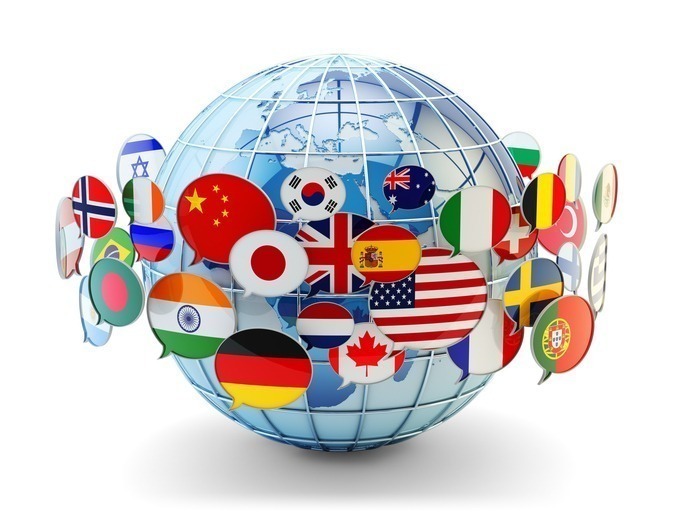What’s more critical in international marketing—relevance or global consistency?
For global brands, this question defines the core of strategic decision-making. Global consistency safeguards a unified brand identity across all markets, while relevance allows a brand to adapt its message to local cultures and consumer behaviours. As international markets become increasingly interconnected, brands must navigate the delicate balance between the two.
Striking this balance is among the most complex challenges facing multinational marketing leaders. While global consistency helps reinforce brand trust and recognition, relevance ensures a brand connects deeply with the local audience. So, how do global consistency and cultural relevance coexist to drive international growth?
Defining Local Relevance in International Marketing
Local relevance in international marketing requires more than surface-level localisation or simple translation. While global consistency provides the foundation, relevance ensures your message resonates with cultural nuances.
This understanding can make the difference between success and failure in highly fragmented and competitive markets. Brands that tailor their strategies to fit regional preferences and cultural norms create stronger consumer connections.
Today, relevance is not a choice; it’s a necessity. Consumers aren’t just seeking products; they want brands that understand and align with their cultural contexts. Brands that successfully adapt their message while maintaining core values tend to outperform those that adopt a uniform, one-size-fits-all approach across regions.
L’Oréal is agreat example. The brand faced this challenge when entering Japan’s beauty market. Their traditional messaging, which worked well in Western markets, wasn’t resonating with Japanese consumers, who prioritise skincare over makeup. To connect with this audience, L’Oréal shifted focus from makeup to skincare, positioning it as foundational to beauty, in line with Japanese cultural values. A highly successful localised campaign strengthened L’Oréal’s market position without compromising its global brand identity. This campaign shows how local relevance can thrive without compromising global consistency when executed with care.
The Importance of Global Consistency in Brand Campaigns
Global consistency is essential for maintaining a recognisable and trustworthy brand identity across multiple markets. While relevance allows for local adaptation, global consistency ensures the brand’s core message and values remain intact. Consumers increasingly expect a stable brand experience, whether they interact with the brand in New York, Shanghai, or Jakarta.
Consistency is particularly critical in sectors like luxury goods or technology, where consumers seek assurance of high quality and reliability. A fragmented brand identity can confuse consumers, erode trust, and ultimately weaken brand equity. Consistency creates a stable foundation upon which localised adaptations can be built without compromising the brand’s essence.
Apple’s Global Consistency
Apple has mastered the balance between consistency and relevance. Across all its markets, Apple’s brand identity remains focused on innovation, premium design, and simplicity. However, it still adapts to local market preferences when necessary. For example, in China, Apple introduced larger screen sizes and enhanced camera functions for mobile gaming and selfies—key preferences among Chinese consumers—without diluting its global brand message of quality and innovation. This approach has allowed Apple to grow its market share in China without sacrificing the consistency of its brand identity.
Apple’s strategy demonstrates that true global consistency doesn’t require uniformity. It requires clarity of brand promise adapted across cultures.
The Global Challenge: Balancing Relevance and Global Consistency
Balancing global consistency with regional relevance is no longer optional; it’s a consumer expectation. Too much emphasis on relevance risks diluting brand identity, while rigid consistency can alienate local consumers. The key is to view relevance and consistency not as opposing forces but as complementary strategies that, when effectively managed, can drive both local and global success.
A recent Nielsen survey highlights this balancing act: 72% of global consumers expect brands to understand local preferences, but 68% still want a consistent global experience. This demonstrates consumers expect brands to adapt where necessary but without compromising the unified message that defines the brand.
Dove’s #RambutAkuKataAku Campaign in Indonesia
Image Source: INMOBI
Unilever’s Dove brand provides a perfect example of balancing relevance and consistency in Indonesia. Dove is globally recognised for its messaging around real beauty and body positivity, resonating with women worldwide. However, when Dove entered Indonesia, it realised that local cultural values and modesty required a more nuanced approach.
Campaign Idea:
In celebration of Kartini Day, Dove launched the #RambutAkuKataAku (My Hair My Say) campaign to empower Indonesian women to embrace their authentic selves through personal expression, particularly with their hair choices. Recognising the cultural significance of modesty in Indonesia, Dove tailored the campaign to respect traditional values while promoting self-confidence and real beauty. The campaign optimised nano influencers to submit their content in Kartini’s day and divided them into three main categories, Hijab, Normal hair and Unique Hair.
Approach:
The campaign encouraged women across Indonesia to share stories about embracing their natural beauty, specifically through their choice of hairstyle and colour. Dove partnered with InMobi to amplify this message, using mobile platforms as the primary engagement channel. This strategy allowed women to easily participate by sharing their experiences, reinforcing Dove’s message of empowerment in a culturally sensitive way. The campaign resulted in 254 tweets, 400 photos submitted, 4,996,154 followers, and a 5.06% engagement rate.
Strategies for Achieving Relevance While Maintaining Global Consistency
Balancing relevance and consistency requires a strategic framework for flexibility within defined boundaries. Brands must develop a strong global identity while enabling local teams to make data-driven adaptations that resonate with their market.
To achieve both local effectiveness and global consistency, marketing leaders must take a structured yet adaptive approach. Here are some effective strategies for achieving this balance:
- Establish a Clear Global Brand Identity: Define your brand’s non-negotiable elements—values, tone, and visual brand identity. These should remain consistent across all markets.
- Empower Local Teams: Local marketing teams have critical insights into regional preferences, trends, and consumer behaviours. Empowering them to tailor campaigns within the global brand framework ensures relevance without fragmenting the brand.
- Leverage Data for Smart Localisation: Predictive analytics and consumer sentiment analysis can guide brands on when to adapt versus stay consistent. Data can inform strategic decisions on how far to localise while keeping the core brand message intact.
- Create Tiered Campaigns: Develop tiered marketing strategies, allowing for varying degrees of localisation. Global campaigns maintain consistency, regionally adapted campaigns reflect cultural differences, and highly localised campaigns address unique market needs.
Case Study: The “Thanda Matlab Coca-Cola” Campaign
Campaign Idea:
Coca-Cola sought to maintain its global message of happiness and unity while adapting to the unique cultural contexts of India and China. In India, the brand launched the “Thanda Matlab Coca-Cola” campaign, positioning Coca-Cola as a refreshing drink shared with loved ones, aligning with the country’s strong cultural emphasis on family and togetherness. In China, Coca-Cola adapted its messaging to reflect the significance of the Lunar New Year, associating the drink with celebrations and family reunions.
Approach:
In both markets, Coca-Cola localised its marketing to resonate with cultural norms while maintaining the consistency of its global brand message. In India, Coca-Cola used colloquial language and imagery to make the brand feel familiar and deeply connected to local traditions. In China, the brand aligned with the national celebration of the Lunar New Year, a major cultural event, by emphasising joy and family gatherings, key pillars of the holiday.
By tailoring messaging to local values while preserving its brand voice, Coca-Cola exemplifies how global consistency can accommodate cultural diversity.
When to Prioritise Relevance and When to Prioritise Global Consistency
Knowing when to prioritise relevance or consistency is key for international brand marketing. In emerging or culturally distinct markets, local relevance should take precedence. For example, launching new products in markets like Vietnam or Thailand requires an understanding of local values, such as ethical consumption or family-oriented themes.
However, in industries like luxury goods or technology, where global recognition is paramount, consistency should be prioritised. Consumers in markets like the US and UK expect the same high standards of quality and experience. During global crises or product recalls, consistent messaging is essential to preserve brand integrity and prevent confusion.
In the Philippines, for instance, brands that align with local values of family and community, such as food brands emphasising communal dining, outperform those that don’t.
However, in Thailand, where luxury consumers expect the same quality experience from brands like BMW or Mercedes-Benz, consistency in messaging and product experience is key to maintaining perceived value. The ability to recognise when to lean into relevance or consistency is critical to success.
In international marketing, success doesn’t come from choosing local relevance over global consistency. The most successful global brands strategically integrate both. Relevance allows brands to connect with local consumers by aligning with cultural preferences, while consistency ensures the brand remains recognisable and trustworthy across all markets.
For senior marketing leaders, the actionable takeaway is clear: define your core brand elements that should remain consistent globally and empower local teams to tailor campaigns for cultural relevance where they make the most impact. Use data-driven insights to guide these decisions, ensuring your brand stays relevant in diverse markets without losing its global identity.
As global consumers grow more connected, brands that master the balance between relevance and consistency will continue to thrive. It’s not about choosing one over the other, but about finding that equilibrium that creates a cohesive, trusted, and culturally resonant brand.
As a global market research agency with offices in ten countries, Kadence International is well-equipped to help you navigate the complexities of international expansion. Whether you need insights into local consumer behaviour, guidance on maintaining brand consistency, or support in crafting culturally relevant campaigns, we have the expertise to ensure your brand’s success. With our deep understanding of Western and Asian markets, we can provide the strategic insights you need to grow your brand globally. We help global brands achieve consistency in voice and identity while enabling the local relevance required to succeed in culturally diverse markets.




